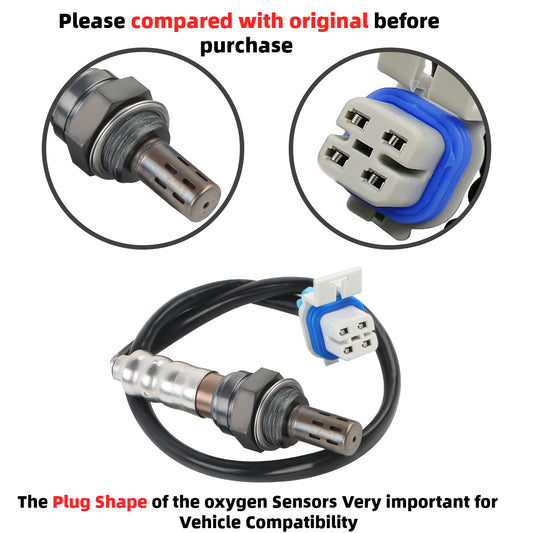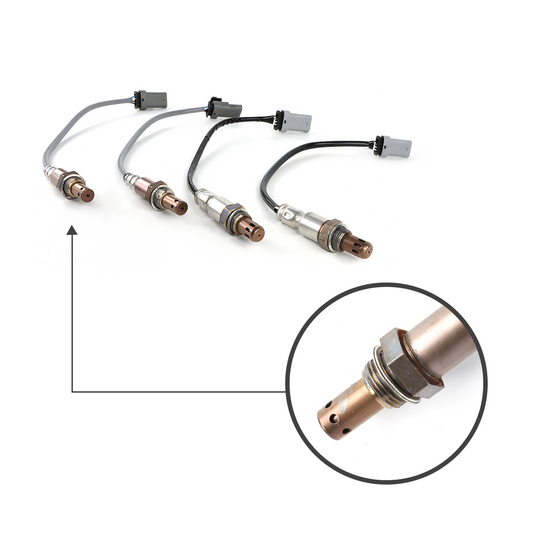What are the symptoms of a bad shift solenoid on a 4L60E transmission? 1-2/2-3/3-4 shift solenoid symptoms
Introduction: When it comes to the 4L60E transmission, shift solenoids play a crucial role in the smooth operation of gear shifting. Identifying the symptoms of a bad shift solenoid is essential for diagnosing and addressing potential issues. This blog will explore the specific symptoms associated with faulty shift solenoids during various gear transitions, including the 1-2, 2-3, and 3-4 shifts. By understanding these distinct symptoms, you can pinpoint the source of the problem and take appropriate actions to ensure optimal transmission performance.
1-2 Shift Solenoid Symptoms:
Common symptoms of a malfunctioning 1-2 shift solenoid in a 4L60E transmission may include:
- Delayed or Harsh 1st to 2nd Gear Shifts:Harsh or delayed engagement when shifting from 1st to 2nd gear.This can lead to erratic or unpredictable acceleration.
- Erratic Shifting Patterns: A malfunctioning 1-2 shift solenoid can result in erratic shifting behavior, with the transmission hesitating or unexpectedly shifting between gears.
- Reduced Fuel Efficiency:Slippage or failure to shift into 2nd gear properly, leading to decreased acceleration and power output,causing you to spend more at the pump.
- Abrupt or jerky shifts between these gears, causing a noticeable jolt or hesitation in power delivery.
- Illuminated Check Engine Light (CEL): A bad 1-2 shift solenoid can trigger the Check Engine Light, and scanning for error codes may reveal codes like P0751, indicating an issue with the solenoid's circuit performance or being stuck off.
2-3 Shift Solenoid Symptoms:
Signs of a faulty 2-3 shift solenoid in a 4L60E transmission can manifest as:
- Fluctuating RPM during Shift: Erratic or delayed shifting between 2nd and 3rd gears, often resulting in higher engine RPMs without corresponding acceleration.
- CEL Illumination: As with the 1-2 shift solenoid, a bad 2-3 shift solenoid can trigger the Check Engine Light, with diagnostic codes like P0756 pointing to issues in the solenoid circuit.
- Rough or harsh upshifts that may cause a sudden jerk or lurch during gear changes .
- Failure to engage or slipping out of 3rd gear, impacting overall vehicle performance and fuel efficiency.
3-4 Shift Solenoid Symptoms:
Symptoms associated with a malfunctioning 3-4 shift solenoid in a 4L60E transmission may include:
- RPM Fluctuations during Shift: Erratic or delayed shifting between 3rd and 4th gears, leading to issues such as high RPMs at cruising speeds.
- CEL Activation: A malfunctioning 3-4 shift solenoid can trigger the Check Engine Light, with codes like P0785 indicating problems with the solenoid circuit.
- Failure to upshift into 4th gear properly, causing the engine to rev higher without achieving the expected speed or fuel efficiency.
- Frequent gear slippage or disengagement from 4th gear, resulting in power loss and reduced overall performance.
Additional Symptoms and Considerations:
In addition to the specific gear transition symptoms mentioned above, other signs of faulty shift solenoids can include:
4L60E Transmission Solenoid Kit Set Diagnostic Trouble Codes (DTCs) stored in the vehicle's onboard computer system, providing specific information about the solenoid circuit or performance. There are some common trouble codes you may meet:
| P0700 | Transmission Control System Malfunctio | This is a generic transmission control system malfunction code commonly used to indicate the presence of transmission-related issues. It does not provide specific fault information but can trigger other more detailed fault codes. |
| P0751 | 1-2 Shift Solenoid Circuit Performance or Stuck Off | This trouble code indicates a problem with the 1-2 shift solenoid circuit, which may be due to poor wiring connections, solenoid failure, or other electrical issues. |
| P0753 | 1-2 Shift Solenoid Circuit Electrical | This trouble code suggests that the voltage or current in the 1-2 shift solenoid circuit is outside the specified range, requiring further investigation into the electrical circuit. |
| P0756 | 2-3 Shift Solenoid Circuit Performance or Stuck Off | This trouble code points to an issue with the 2-3 shift solenoid circuit, similar to P0751, possibly caused by poor wiring connections or solenoid failure. |
| P0758 | 2-3 Shift Solenoid Circuit Electrical | This trouble code indicates that the voltage or current in the 2-3 shift solenoid circuit is outside the specified range, necessitating further electrical troubleshooting. |
| P0785 | 3-4 Shift Solenoid Circuit Performance or Stuck Off | This trouble code indicates a problem with the 3-4 shift solenoid circuit, similar to P0751 and P0756, and may involve wiring or solenoid issues. |
| P0787 | 3-4 Shift Solenoid Circuit Electrical | This trouble code suggests that the voltage or current in the 3-4 shift solenoid circuit is outside the specified range, requiring additional electrical diagnostics. |
| Other Relevant Fault Codes | In addition to the above examples, there may be other fault codes related to transmission issues that can provide more detailed information to help pinpoint specific problems. |
Transmission fluid leaks, irregular fluid levels, or burnt odor, which may indicate broader transmission problems requiring attention.
Diagnostic Procedure for 1-2, 2-3, and 3-4 Shift Solenoid Failures:
- Trouble Code Scanning: Initiate the diagnostic process by employing an OBD-II diagnostic tool to interface with the vehicle's diagnostic port. Scan for and document any fault codes associated with transmission or shift solenoid issues. These fault codes serve as critical indicators of the underlying problem.
- Fluid Level Verification: Begin with a meticulous inspection of the transmission fluid level. Refer to the vehicle's manual or the manufacturer's specifications for the recommended fluid level range. If the fluid level is found to be below or near the lower limit, it could potentially result in shifting irregularities. Prior to replenishing or replacing the transmission fluid, ensure the use of the correct transmission fluid type.
- Electrical Connection Examination: Conduct a thorough assessment of the electrical connections linked to the shift solenoids, encompassing plugs, wiring, and sensors. Verify the integrity of all connections, ensuring they are securely fastened and devoid of any physical damage. Loose connections or damaged wires can impede the proper functioning of the solenoids.
- Solenoid Testing: Employ either a multimeter or oscilloscope to execute comprehensive tests on the shift solenoids. Consult the vehicle manual for precise solenoid specifications. Typically, a healthy solenoid should exhibit resistance values within the specified range and demonstrate the ability to operate effectively under the designated voltage parameters. In instances where a solenoid is unresponsive or exhibits irregular resistance, it may necessitate replacement.
- Hydraulic System Evaluation: Utilize hydraulic testing equipment to meticulously evaluate the performance of the transmission's hydraulic system. This encompasses conducting shift tests across various gears to ascertain the hydraulic system's proper functionality. The testing protocol should help to pinpoint potential hydraulic irregularities contributing to shifting problems.
- Road Testing: Initiate a road test to meticulously observe the vehicle's shifting dynamics. Pay close attention to any signs of delayed shifts, challenges in gear engagement, or harsh shifting behavior. Road testing serves as a pivotal validation step to ensure that the addressed issue has been successfully resolved.
- Data Logging: When possible, record and document data from the vehicle across various driving conditions as part of data logging. This dataset should include variables such as vehicle speed, engine RPM, throttle position, and more. Such data can prove invaluable when diagnosing more intricate issues.
- Utilization of Specialized Diagnostic Tools: In specific scenarios, the application of specialized diagnostic tools and software can yield in-depth insights into transmission performance and real-time sensor data.
- Holistic Assessment: Based on the collated fault codes, testing results, and observed symptoms, undertake a comprehensive assessment of the issue. Ascertain the root cause, laying the foundation for necessary remedial measures.
- Component Repair or Replacement: Subsequent to a meticulous assessment, repairs may encompass the rectification or replacement of shift solenoids, wiring, plugs, hydraulic components, or other pertinent parts. Adhere to the usage of OEM or certified replacement components.
- Clearance of Fault Codes: Post-repair, utilize the diagnostic tool to expunge any stored fault codes residing in the vehicle's control module. This step is pivotal in confirming the resolution of the issue.
- Re-Road Testing: Conclude the diagnostic process with another round of road testing to validate the effectiveness of the undertaken repairs. Ensure that the vehicle's shifting behavior has been reinstated to its normal operational state.
Conclusion: Identifying and diagnosing symptoms of faulty shift solenoids in a 4L60E transmission is crucial for maintaining optimal transmission performance. By understanding the specific symptoms with the 1-2, 2-3, and 3-4 gear shifts, you can effectively address any issues and ensure a smooth and reliable driving experience. Should you encounter these symptoms, it is recommended to consult with a qualified mechanic or transmission specialist for proper diagnosis and repairs.
Have you encountered shift solenoid problems in your vehicle? How did you diagnose and address the issue? Your valuable input can help fellow readers facing similar challenges find effective solutions and make informed decisions. So, don't hesitate to join the discussion and contribute your knowledge to our automotive community.




















3 Comments
Thanks for your help